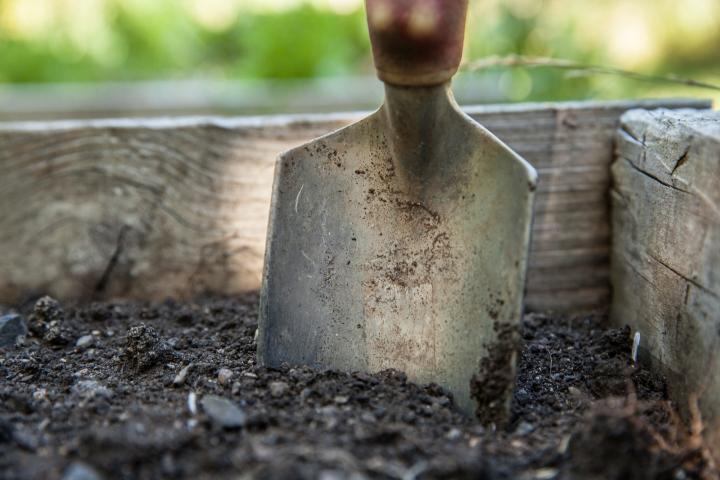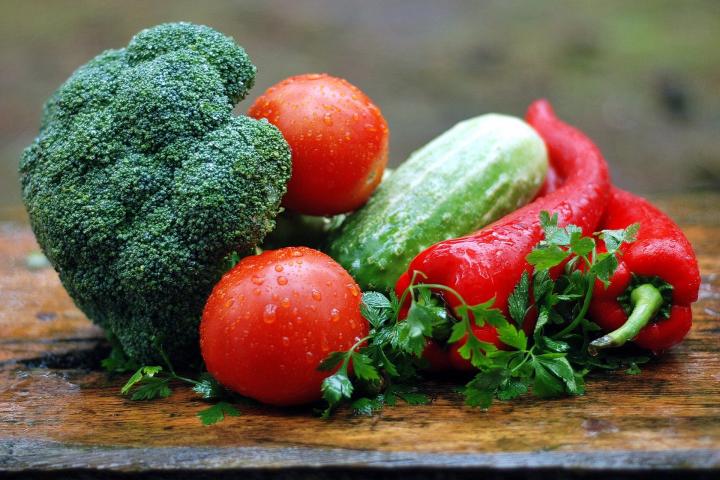We apply fertilizer to make our plants grow better. But when do we apply fertilizer? And how do we apply fertilizer to the garden? In one page, we’ll cover the basics of using fertilizer in your garden.
|
| WHAT IS FERTILIZER?
Think of fertilizers as nutritional supplements. Plants need a variety of life-sustaining nutrients—such as nitrogen and phosphorus—which they take up from the soil. Many soils contain adequate nutrients for the plants to absorb, but some soils do not, which is where fertilizers come in.
Fertilizers are plant nutrients that are added to the soil. The plants absorb these essential nutrients from the soil to improve health, growth, and productivity. Soil nutrient deficiencies reduce and modify plant growth. You can also tell which nutrients your soil is lacking by the deficiency symptoms they display, which can range from yellow leaves (lack of nitrogen) to reduced flowering (lack of phosphorus) to weak stems (lack of potassium) to blossom-end rot (lack of calcium).
Not all soil needs fertilizer. Think about a natural setting where fallen leaves and plants decompose in place. Nutrients are naturally recycled into the soil and made available to growing plants. If your soil is rich in nutrients and the microbial life that aids in the plants’ uptake of these nutrients, then adding more can upset that healthy ecosystem. In fact, more fertilizer is not better! Plants use only the nutrients that they need. To absorb more than are unnecessary can result in abnormal growth.
However, many garden soils do need fertilizer, especially if the soil has been cultivated previously. If you’ve grown and harvested plants in your garden in the past, they have taken up nutrients from the soil, and those nutrients need to be replaced before more plants are grown there. This is where fertilizer (organic or processed) plays a role. Fertilizer replaces lost nutrients, which ensures that soil nutrient levels are at an acceptable level for healthy growth. |  | ALWAYS TAKE A SOIL TEST
The only way to truly determine the level of nutrients in your soil is to test it. Soil tests are usually available for free or low-cost from your local cooperative extension. A soil test is easy to do and the results guide your fertilizer applications. You may even find that if your garden has been fertilized for years, you have high levels of nutrients. You do not want to add nutrients to your soil if it’s already available in high amounts; this may inhibit your plants’ growth. Read more about how to take a soil test.
HOW TO READ FERTILIZER LABELS
Ever seen those confusing labels on fertilizer bags? The numbers can seem daunting at first, but once you know what they mean, they tell you exactly what you need to know about a fertilizer.
A fertilizer label on a package will have three numbers, such as 5-10-10. These numbers refer to the percentage of Nitrogen (N), Phosphorus (P), and Potassium (K), the three nutrients that plants need the most. If you add up the numbers, they are the percentage of the bag’s total weight (the rest is simply filler to make it easy to handle). There may also be other nutrients, including calcium, magnesium, iron, and manganese.
You can find these nutrients in many strengths; they can be processed or organic, and may come in liquid of granular formulations.
“Complete” fertilizers contain all three nutrients (example, 10-10-10). Sometimes, the nutrient ratios are important. For example, if you’ve ever experienced lush green growth without flower blooms, you may have too much nitrogen. You might choose a fertilizer label with 3-20-20 (low in nitrogen). Alternatively, vegetables planted in cold soil may need extra phosphorus for root growth; you might choose a fertilizer labeled 10-50-10.
Read more in our article on fertilizer basics and the NPK ratio. | PROCESSED VS. ORGANIC FERTILIZERS - Processed fertilizers (also called "synthetic" or "chemical" fertilizers) are manufactured from natural ingredients such as phosphate rock (P) and sodium chloride (NaCl) and potassium chloride (KCl) salts, but these are refined to be made more concentrated. Most (but not all) processed fertilizers are quick-release in a water-soluble form to deliver nutrients quickly to the plant, which can be useful in some situations. (There are some processed fertilizers that are coated to slow down the release.)
- Organic fertilizers are materials derived from plants that slowly release nutrients as the microorganisms in the soil break down. Often applied in granular form (spread over the soil), most organic nutrients are slow-release, adding organic material to the soil so you don’t need to apply it nearly as often. (Plus, they don’t leach into and pollute waterways, as do many of the synthetic, water-soluble fertilizers, which plants can’t fully absorb.) While most organic fertilizers are slow-release products, some release a portion of their nutrients quickly (examples are animal manure, biosolids, and fish emulsion).
Chemically, the nutrients for processed and organic fertilizers are the same. Ideally, slow is the way to go. Slow-release granular fertilizers meter out nutrients in a controlled, “digestible,” and safe manner, as opposed to fast-acting, synthetic, water-soluble fertilizers, which are, in essence, an overdose.
In terms of cost: While organic fertilizers can be more expensive upfront than processed fertilizers, they are often still economical for small gardens. Plus, you don’t need to apply as often. When you add the long-term benefits to your soil, organic outweighs processed. |
|
 | WHEN TO FERTILIZE YOUR GARDEN
If you are correcting a soil nutrient deficiency based on a soil test, it’s best to fertilize well before you plant so that you can work the fertilizer deep into the soil.
Otherwise, fertilize in the spring before planting annual flowers and vegetables and as growth begins for perennials. Many gardeners use a general-purpose fertilizer at this time (either an evenly balanced fertilizer or one that’s slightly higher in nitrogen). Incorporate fertilize into the soil several inches deep for annuals and vegetables. For perennials, work fertilizer lightly into the soil around the plants.
Plants need the most nutrients when they are growing most rapidly. This occurs earlier for spring plantings of lettuce and other greens. Rapid growth occurs midsummer for corn and squash. Tomatoes and potatoes also will need extra fertilizer (N) mid-season as the plants takes us nutrients.
For a long-season crop such as corn, many gardeners apply a small amount of fertilizer as a starter at the time of seeding, and then add a larger amount in early summer, just before the period of rapid growth. When using organic fertilizers for long-season crops, a single application is usually adequate because these fertilizers release their nutrients throughout the season.
For perennial plants, the timing depends on the plant’s growth cycle. Blueberries, for example, benefit when fertilizer is applied early in the season at bud break, while June-bearing strawberries benefit most when fertilized after harvest.
Ornamental trees, shrubs, and perennials are often fertilized at the beginning of their growing season as dormancy breaks.
HOW TO APPLY GRANULAR FERTILIZERS
For the first fertilizer application of the season, apply granular fertilizers by broadcasting them either by hand or with a spreader over a large area. Or, side-dress the fertilizer alongside your rows or plants or seeds. All dry fertilizers should be worked or watered into the top 4 to 6 inches of soil with hoe or spade work after being applied to help the fertilizer leach down toward the plants’ root zones. If your plants are already growing, cultivate gently so that you do not damage any roots.
During the growing season, lighter supplemental applications can be made to the top inch of soil in crop rows and perennial beds and around the drip lines of trees or shrubs. (Read the label to find out how often applications should be made.)
In general, applying granular fertilizers just before a good rain can be beneficial, as it aids in working the fertilizer down into the soil where roots can access it.
HOW TO APPLY LIQUID FERTILIZERS
All water-soluble fertilizers are applied by dissolving the product in irrigation water and then applying it to the leaves of the plant and the soil around the plant.
Don’t apply liquid fertilizer at the exact same time that you plant. No matter how carefully you remove plants from their containers and place them in the ground, some root hairs will break. The fertilizer will reach the roots immediately and enter them at the broken points, “burning” them and causing further die-back.
Many gardeners wait 2 to 3 weeks after planting before fertilizing with liquid solutions; by then, the newly set-out plants should have recovered from any root damage.
It is important to water plants thoroughly with plain water before applying the liquid fertilizer to avoid burning the roots if the soil is dry. Also, take care that the fertilizer is indeed diluted based on instructions, or you could burn the leaves. If you have a watering system, you can use an injector device to run the fertilizer through the system.
In the case of liquid sprays, it is best to apply them on dry days in either the early morning or the early evening, when the leaves will have time to absorb the material. Avoid extremely hot days when foliage is subject to burning.
LEARN MORE ABOUT FERTILIZING YOUR GARDEN
If you have more questions about fertilizers, please ask below, or we encourage gardeners to call their country’s free cooperative extension office for local advice.
We hope you’ve learned a lot about fertilizers! When is your soil ready to plant in the spring? See our minimum temperature for seeds to germinate. | |
|
| |



No comments:
Post a Comment